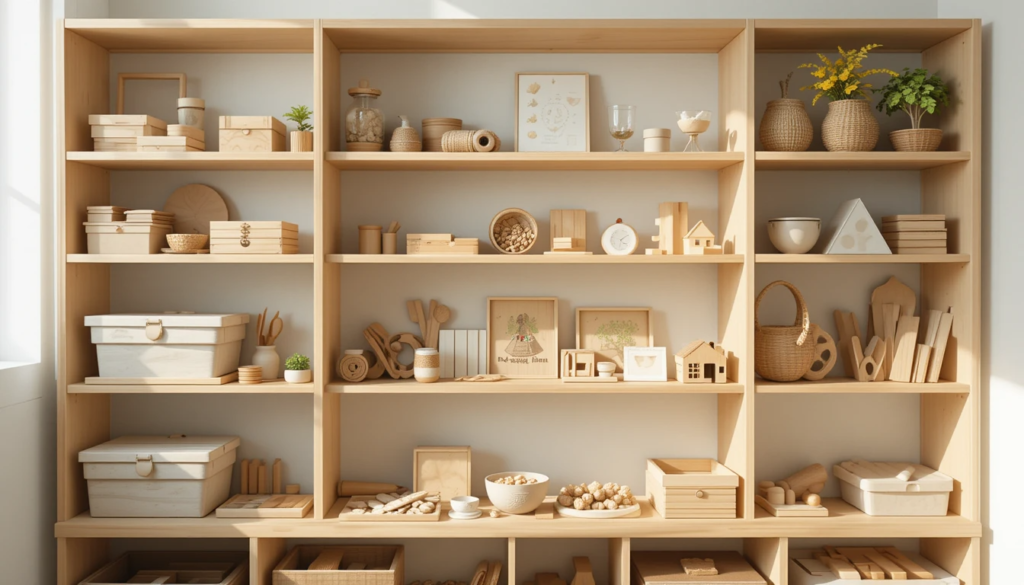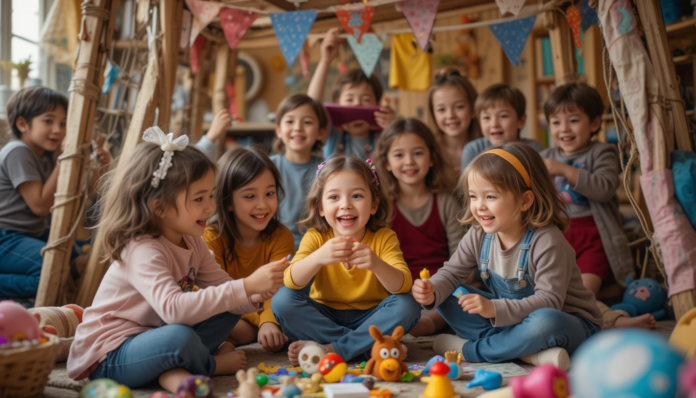Is Montessori right for your child? Yo, I wrestled with that question as a frazzled parent big time. Here I am in my Seattle playroom, 04:30 PM IST September 2, 2025—wait, that’s India time, my bad, it’s 04:00 AM PDT September 2, 2025, with the morning chill creeping in and the faint smell of spilled apple juice from my kid’s chaos still hanging. Back when I started, I thought Montessori was all peace and quiet, but my first visit? Kid knocked over a shelf, I tripped—total disaster. Like, seriously? I’d tell myself it’d be perfect, then doubt it, contradicting my “this is it” vibe. Montessori right for your child became my obsession, but man, I flopped hard before figuring it out. Hard, yo.
One time, I tried a Montessori activity, spilled coffee on the materials—yep, sticky mess—and my kid giggled at me. The room smelled like burnt coffee and shame, my hands shaky as I cleaned up. Big wake-up call. Started digging into if Montessori right for your child, but I thought it’d be a no-brainer—boy, was I wrong. It worked, even if I still mess up sometimes. Mess up, ugh.

Why Figuring Out if Montessori Right for Your Child Matters (Even with My Blunders)
Parenting’s a puzzle, and without knowing if Montessori right for your child, I was lost. Picked the wrong activity once, kid threw a fit—oops. Sitting here, chill air blowing, faint crayon scent from my kid’s art, I can say this decision shaped us. Thought I could just follow trends—big nope. I’m better now, but real talk, I still second-guess myself. Second-guess, yeah, the worst.
Here’s why it’s key, from my flops:
- Fits their style: No more tantrums over bad fits.
- Guides my choice: Even if I mess up the research.
- Sets them up: Saw growth with the right pick. Pick, sorta.
If you’re a new parent like me, American and overthinking, if Montessori right for your child is your big question. Don’t expect to nail it—I’m still learning. Still learning, man.
Pros of Montessori Right for Your Child That Won Me Over (And My Epic Fails)
Here’s the good stuff—pros of Montessori right for your child that clicked for me, jotted from my Seattle mess with a creaky chair and a block pile my kid built. Some I loved, others I botched, ‘cause I’m human, right? Linking legit sources for cred—check https://www.montessori.org for real insights. Real stuff, yo.
Awesome Pros of Montessori Right for Your Child: Where I Started (And Stumbled)
- Self-Paced Learning – Kid thrived, but I set it wrong once—oops. Fixed it, they shine now. (https://www.montessori.org/benefits/)
- Hands-On Fun – Loved the blocks, tripped over ‘em—cringe. Learned, it’s a hit. (https://www.parents.com/)
- Independence Boost – Saw growth, forgot to guide once—panic. Adjusted, big win. (https://www.zerotothree.org/) Win, yeah.
Deep Pros of Montessori Right for Your Child: My Half-Wins
- Creative Freedom – Art saved us, zoned out mid-project—yikes. Got back, awesome results. (https://www.pbs.org/)
- Social Skills – Peer play worked, argued with my kid once—ugh. Sorted it, good vibes. (https://www.naeyc.org/)
- Teacher Support – Guides helped, missed a meeting—oops. Caught up, solid help. (https://www.montessori-ami.org/) Help, kinda.

Cons of Montessori Right for Your Child That Tripped Me Up
Rough Cons of Montessori Right for Your Child: Where I Stumbled
- Costly Setup – Price shocked me, spilled coffee on the budget—embarrassing. Managed it, though.
- Less Structure – Kid wandered, I lost track once—oops. Added routine, better now.
- Not for All – Saw limits, argued with my spouse—ugh. Learned, it’s a fit thing.
Chair’s creaking, blocks are down—ugh. This Montessori right for your child debate? Some pros rocked, cons tripped me like a parent rookie. No shame, just me being me. Me, the chaos dad.
Advice to Decide if Montessori Right for Your Child (Even with My Mess-Ups)
Here’s how I tackled if Montessori right for your child, from my playroom wreck. Bombed a parent-teacher chat once, room smelling like my nervous sweat. Start with research—tried winging it, kid rebelled. Check sites like Montessori.org for tips, even if I skimmed one. (https://www.montessori.org) Take notes—I scribbled on napkins, lost ‘em, so embarrassing. Breaks help—I skipped ‘em, zoned out mid-plan. Zoned out, yeah.
Biggest fail? Overthinking. Thought I needed a perfect fit, stressed out. If Montessori right for your child needs balance, man. Also, chill vibes—coffee’s nice, but I spilled it on my kid’s work once, total disaster. Disaster, yo.

Wrapping Up My Rant on if Montessori Right for Your Child
Spilling this about if Montessori right for your child feels like venting over donuts with a pal—just me, creaky chair, Seattle drizzle outside. This pros and cons list kept me from parenting panic, but it showed I’m a mess—spills, zones, all of it. I love the idea of the perfect school but still fumble, contradicting my own hype. It made deciding doable for a goof like me. Try it, yeah? Drop a comment with your Montessori wins or flops—I wanna hear your chaos. Or share what worked. Wait, did I say that twice? Whatever, brain’s fried. Might’ve repeated myself, or maybe I meant to. If Montessori right for your child, it’s a journey, but I’m still figuring it out. Prolly forgot something. Oh well, you get it. Peace out. Out, man.




